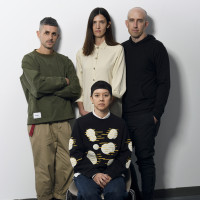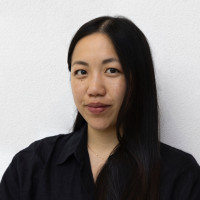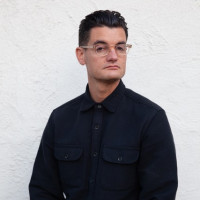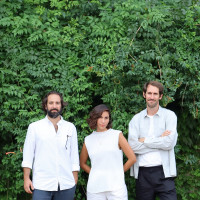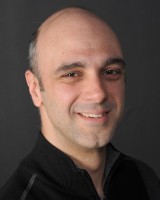JOB HUNT STRATEGY& Timeline
- Save emails from Career Services in a folder for future use because they contain helpful tips and contact names at firms.
- Research firms for cover letter & interview advantage.
- Clarify your “hard skills” and “soft skills”.
- Your life is the movie; portfolio is the trailer; sample page is the movie poster.
September:
- Attend “CIA” Careers in Architecture.
- Review examples of resumes and sample pages on soa.syr.edu.
- Design resume and sample page, 1MB max file size.
- Proof for typos, credit all collaborators.
- Submit draft to Career Director for editing.
October:
- Collect entire inventory of your images.
- Review examples of portfolios in career office and at ISSUU.com
- Curate your images to design portfolio draft, submit ISSUU link for review.
- Create LinkedIn.com profile.
- Adjust all social media privacy settings.
- Ask three people to serve as references & provide each with resume/samples.
- Create reference sheet to take with you to interviews.
November:
- Research firms in your city of choice.
- Use the ADVANCED Search of LinkedIn.com to find contacts in firms.
- Call contacts to make appointments for Thanksgiving Week visits.
- Visit contacts, ask for business cards, send thank-you notes or postcards.
December:
- Create spreadsheet/notebook with firm info, contacts, follow-up dates.
January:
- Revise resume, sample pages, portfolio according to visit experiences.
February:
- Call contacts to arrange interviews during Spring Break.
- Prepare for salary negotiation based on your skills (not your bills).
March:
- Bring sketch book, prep book, notebook, portfolio, resume/samples pages to interview; bring laptop to show animations to interviewer.
- Send thank-you notes or postcards.
April:
- Follow up with contacts by phone and email to schedule 2nd interview.
- Determine earliest possible start-date for employment.
- Enroll in AXP formerly called the Intern Development Program (IDP).
May / June:
Before accepting an offer, ask about benefits, AXP support, overtime policy and typical overtime norms, support for taking the Architecture Registration Exam (study materials, study groups, salary incentives).
Overview of key Actions
Resume:
- Brief, organized, elegant.
- Use verb phrases to give reader impression of your productivity.
- Avoid using your initials to design a logo.
- Use one email and one phone number.
- Use Syracuse postal address unless your other address is in/near city of choice.
Sample Page
- Choose 3-5 images per page to express your skills and interests.
- Design page with “hierarchy”.
- 1MB max file size per page.
- Include name and contact info on each page.
- If using a partner project, credit collaborators.
- If one page is a partner project, other page(s) should be solo work.
Cover letter
- Avoid “form letters” by doing research on alumni & firms.
- Call alumni/ae to learn about unpublished projects and learn what firm prefers to see on your resume and in portfolio.
- Three paragraphs, three sentences per paragraph.
- First paragraph is about the firm, second about you, third is contact info.
- Use the firm’s website and internet searches to collect information.
- Conduct a google search to find awards and press recognition.
- Research firm in design journals.
- Review firm’s FB, LinkedIn page, blog to learn how firm markets itself.
- Review LinkedIn.com profiles for firm’s employees.
References
- Professor, teacher, former supervisor, volunteer service coordinator.
- Provide copy of resume and sample page(s) to people serving as references.
- Take reference sheet with you to interview, unless otherwise requested.
Portfolio
- Document each semester’s work during winter & summer breaks.
- Save your “trace” diagrams, sketches, iterations, study models so that you can reveal your design process.
- Get permission from your employer to use drawings in your portfolio.
- Required text: Your name, project list, title of project, site, names of professor(s) and collaborator(s).
Intern Development Program: Enroll through NCARB
- Choose a supervisor and submit your eligible hours within six months.
interview
- Dress professionally; employees may “dress down,” but interviewees “dress up,” plan to arrive 10 minutes early.
- Use your portfolio as a vehicle to have a conversation about you rather than your projects; focus on your interests, your skills.
- Be prepared to answer “Tell me about yourself” in a conversation that includes your top 3 skills. Soft skills = people, leadership, team-player. Hard skills = software, model-building, on-site experience.
- Ask what a typical day would be like for you. Ask what kind of project you might work on, and who your supervisor might be.
- If the employer doesn’t bring it up by the end of the interview, ask how the position is compensated/paid. (If it is NOT paid, you cannot count these hours toward your AXP & license requirements.)
- If an offer is not made, ask the employer when you might expect to hear more.
Accepting an offer
- Ask employer for deadline date for your response to the offer.
- Confirm start date.
For summer internship applicants
If you are a 1st-year or 2nd-year student, you may only have enough images to design and print 2-3 pages of images rather than a bound portfolio. You may use 1-2 images from your high school portfolio as well as sketches, competition drawings, photography, ceramics, jewelry, furniture, painting and collage; anything that demonstrates your skills and talent and interests. If you have five 2-page spreads (10 pages), you might consider printing and binding. Use quality paper, matte or semi-gloss finish and a Wire-O binding.
Internship Search While studying off-campus
- If you are going to Florence, London, or NYC for the spring semester, be sure to take electronic copies of your resume, basic cover letter, and work samples with you so that you are prepared to act when you hear of a job opening that is a good fit for you.
- Begin to research firms before you leave for your off-campus experience; call alums while you are in the USA, visit contacts over Winter & Spring Break.
- After you get to your off-campus study destination, continue to research firms and use LinkedIn.com to find contacts.
- Call the contacts or network through LinkedIn; offer to participate in a “Skype” interview.
- Clearly state the earliest date you will be available to meet personally and conduct an interview.



